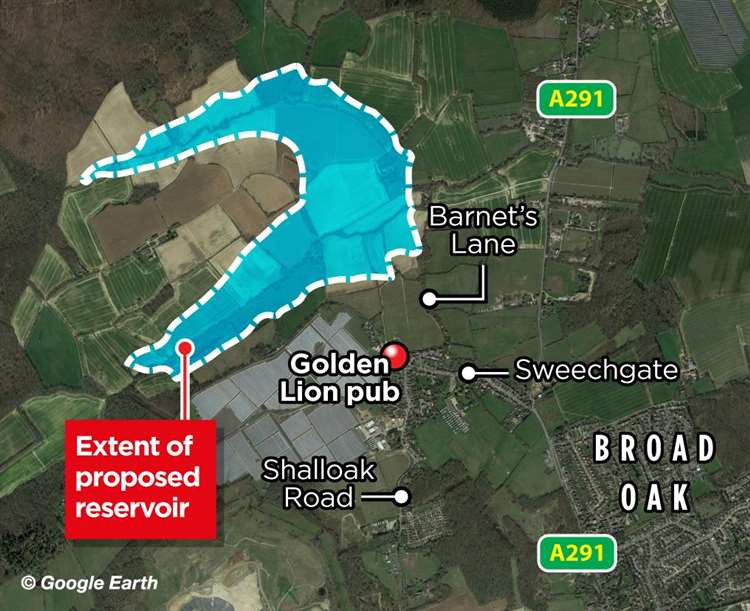For those with ad blockers ...
Hopes new Kent reservoir to store billions of litres of water will be built near Canterbury by 2032
An “urgently needed” reservoir capable of storing five billion litres of water is hoped to be built in Kent within the next decade.
South East Water bosses want to flood a sprawling expanse of farmland in Broad Oak,
Canterbury, and have the site operational by 2032.
A map showing where the proposed reservoir would go
Calls for the long-mooted project to get underway have increased in recent weeks.
With water supply issues plaguing villages last month, and the impending introduction of a hose pipe ban, Kent’s need for greater storage capacity is greater than ever.
The envisaged reservoir at Broad Oak has long been on the cards, yet the plans - first drawn up 50 years ago - have failed to materialise.
Now, however, South East Water has issued a prospective timetable for the project.
It is set to launch a public consultation this autumn, before submitting a planning application for the site as early as 2024.
Lee Dance, the company’s head of water resources, told
KentOnline: “We’re aware of the need to build a new reservoir in Kent and plans have been in the pipeline to build a new reservoir at Broad Oak since the 1970s.
“We already own the required land and we have been undertaking both environmental and engineering studies in recent years.
“The proposal includes building a new reservoir, which will provide at least a further 20 million litres of water per day, water treatment works and recreational facilities for the community to enjoy.
“Our current timeline is that a planning application will be made between 2024-26, followed by construction and filling the reservoir.
“We are hoping to deliver this project by 2032 and we will be launching our consultation on our latest draft water resource management plan – which includes the latest proposals for a new reservoir at Broad Oak – in November this year.”
Set to be of similar size to the 180-acre Ardingly Reservoir in West Sussex, Broad Oak will be one of the largest in the south east.
With the ability to store five billion litres of water, it will be able to cater for about 40,000 homes.
Bewl Water - the biggest reservoir in the south east - has the capacity for 31 billion litres.
Mr Dance added: “Our water resource management plan sets out how we will continue supplying top quality drinking water to our customers, while striking that delicate balance between protecting and enhancing the environment while serving a growing population."
South East Water last consulted with local people on the plans back in 2018, when it was suggested the reservoir could be built by 2030.






